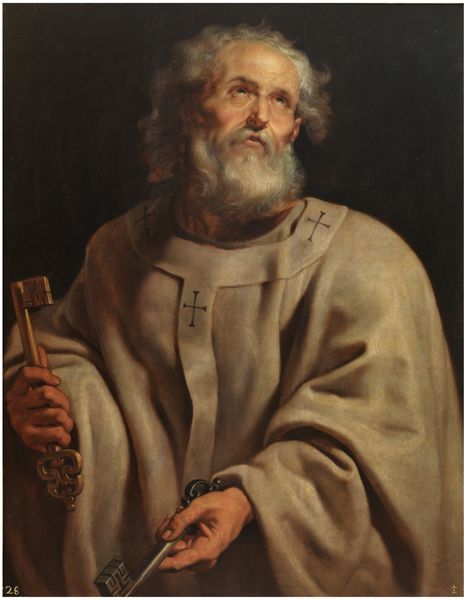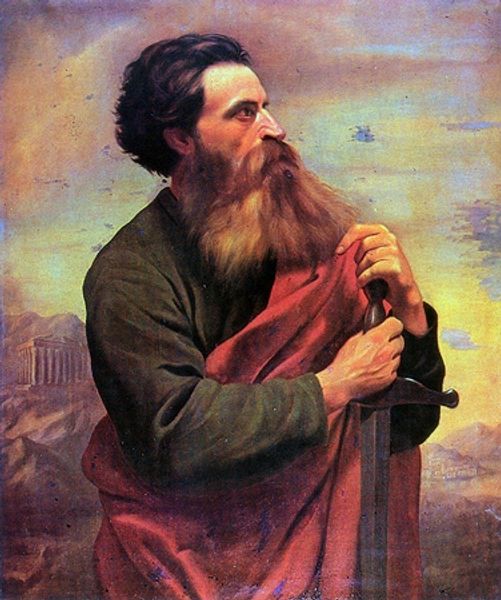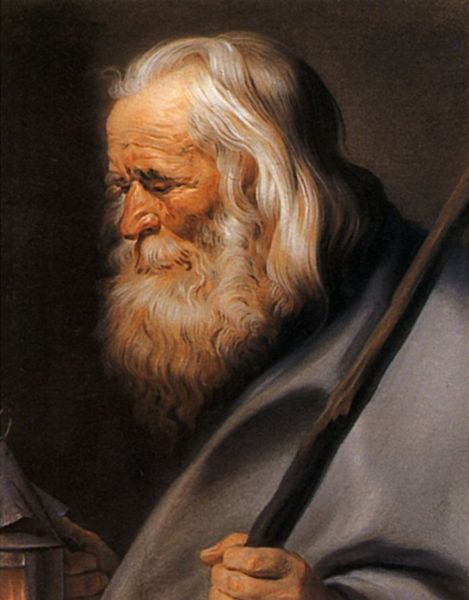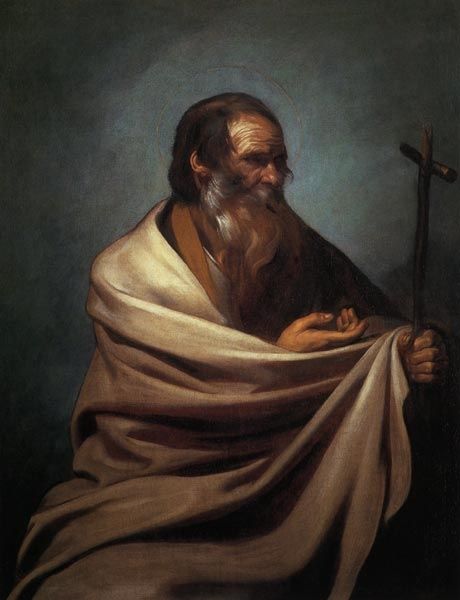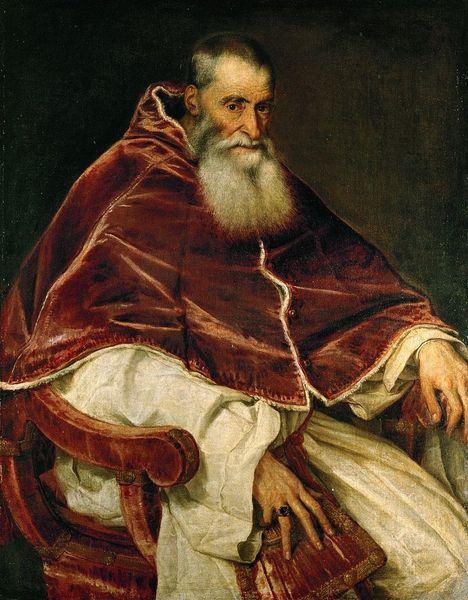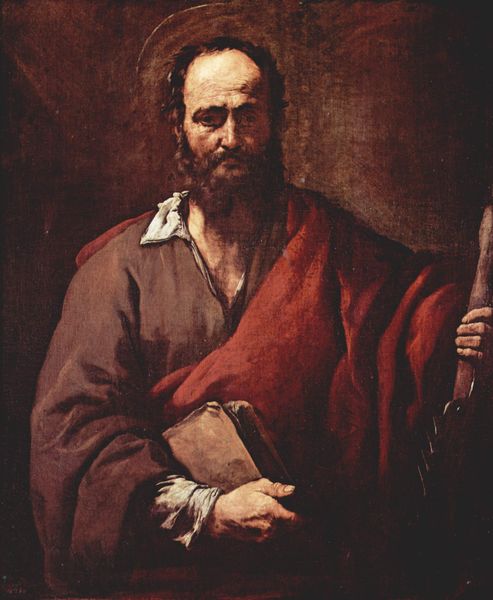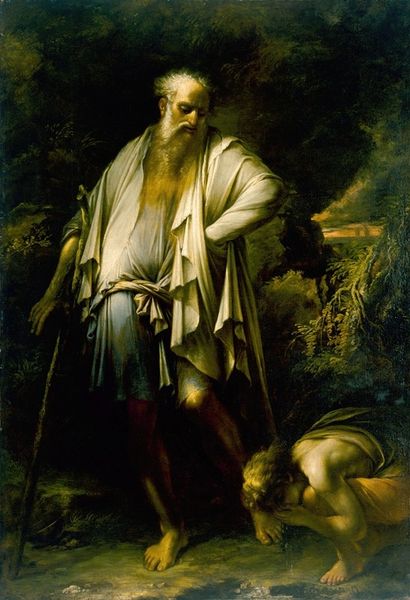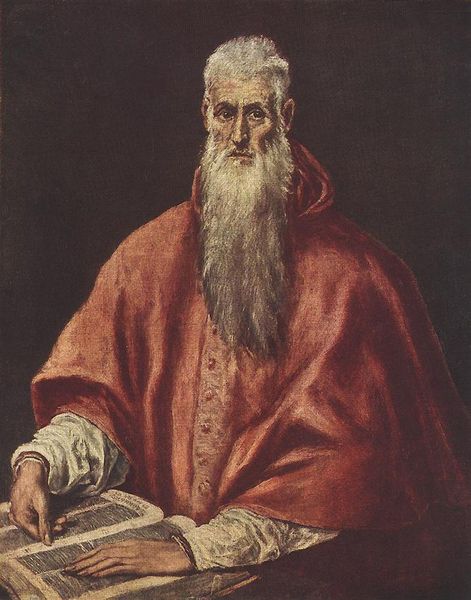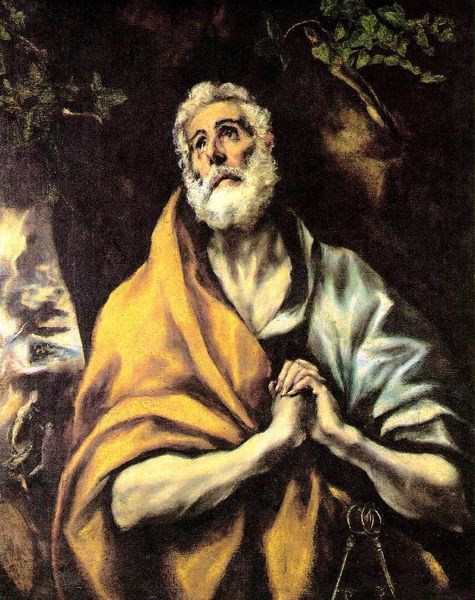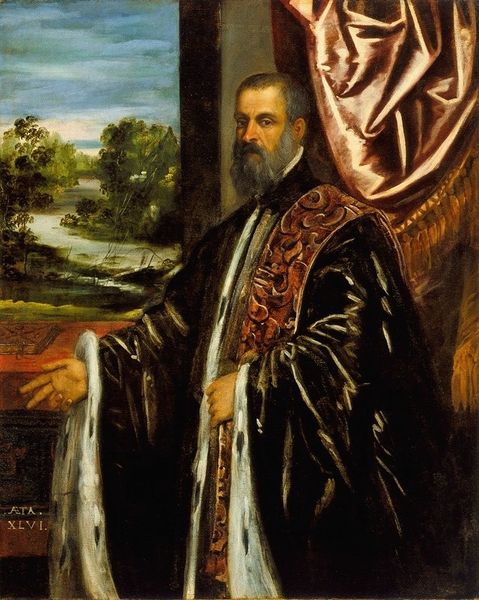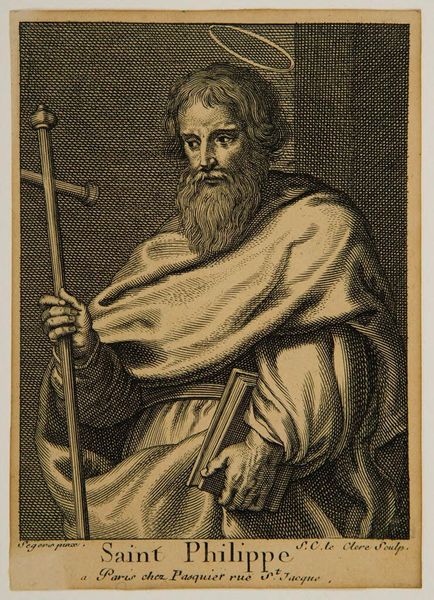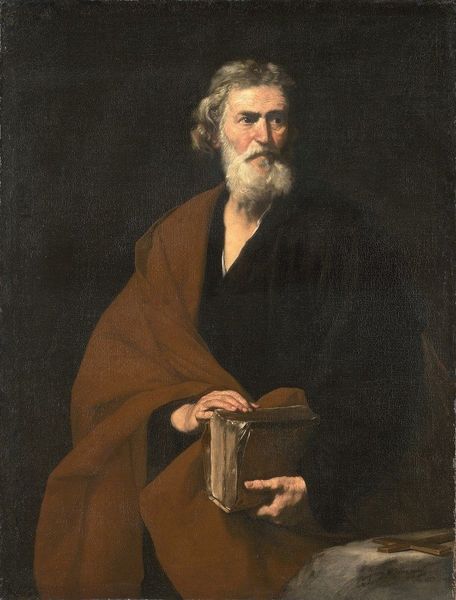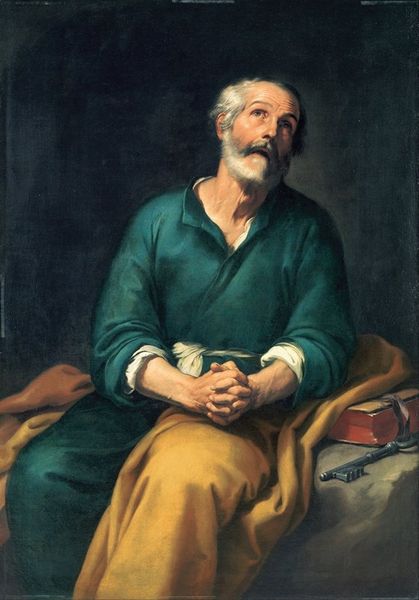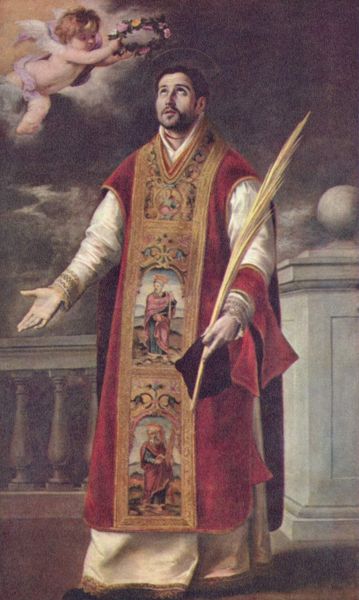
painting, oil-paint
#
portrait
#
baroque
#
painting
#
oil-paint
#
oil painting
#
chiaroscuro
#
christianity
#
history-painting
#
portrait art
Dimensions: 168 x 97 cm
Copyright: Public domain
Curator: Let’s examine "Saint Elias" by Jusepe de Ribera, an oil painting from 1638. It captures a half-figure portrait of the prophet, complete with book and swirling smoke. What are your immediate impressions? Editor: There's a stark quality to it; the raw brushstrokes and that enveloping smokiness impart a palpable sense of isolation. And the scale seems almost…monumental. Curator: Absolutely, the baroque style lends itself to drama and that monumentality underscores the importance of this subject. Consider how Ribera manipulates the light, a powerful example of chiaroscuro. Observe how it sculpts the prophet’s face. Editor: I am interested to see Ribera portray Elias holding a book, which contrasts the conventional view. It highlights a lesser-known part of the saint's legacy; he seems to suggest wisdom gained through study. In broader historical terms, images like this also catered to the spiritual and intellectual needs of the Counter-Reformation audience. Curator: Indeed. That book draws the viewer in but also separates Elias from earthly, sensual temptations, framing him as an interpreter of scripture and reinforcing notions of erudition. Notice the painterly quality; this adds to the raw emotive quality you noted earlier. Editor: Yet, let us think about the public context of such imagery, where this work might have been viewed, possibly in a place that sought to inspire moral reform or simply remind one of their beliefs, given the tense social and political tensions present at that time. I’m fascinated by the thought of art as both a visual experience and part of societal processes. Curator: Precisely, and from a purely visual perspective, the artist utilizes a warm, almost muted palette and dramatic interplay of light to capture an introspective study. Even the white robe serves to amplify this chiaroscuro to underscore the solemnity of Elias’s moment. Editor: To put this another way: The interplay of faith, power, and visual rhetoric are what makes it interesting, and it causes me to rethink how individuals understand visual information and their cultural importance in various historical situations. Curator: I concur; his stark simplicity highlights his importance while serving to heighten the artwork’s spiritual magnitude through formal considerations of style and brushstroke. Editor: Indeed, an exploration which ultimately reminds us of art's entwined significance whether assessed purely in visual form or as expressions reflecting cultural and public needs.
Comments
No comments
Be the first to comment and join the conversation on the ultimate creative platform.
